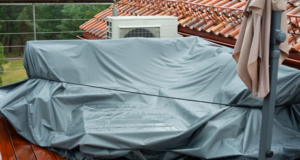

When it comes to home safety, keeping your family protected from potential threats is a top priority. One often overlooked danger is carbon monoxide (CO), a colorless, odorless gas that can be deadly if undetected. As we delve into the importance of safeguarding your home, let’s first discuss the critical role of professional gas heater services in preventing CO-related incidents.
Understanding Carbon Monoxide
In this section, we will delve into the fundamentals of carbon monoxide, exploring its origins, and shedding light on why it demands our attention. Understanding the nature of this invisible threat is the first step towards safeguarding your family.
What is carbon monoxide (CO)?
Carbon monoxide, often abbreviated as CO, is an insidious byproduct resulting from the incomplete combustion of various fuels such as gas, wood, and oil. This invisible menace is frequently emitted by common household appliances, with gas heaters leading the pack. It’s important to recognize the silent nature of this gas – lacking any discernible odor or color, it can stealthily permeate your living space until symptoms of exposure manifest.
Sources of carbon monoxide in the home
Gas heaters, omnipresent in many homes, can become unwitting sources of CO if not properly maintained. This is where the importance of routine gas heating repair and maintenance becomes evident. Beyond heaters, other household appliances like stoves, water heaters, and even the car idling in an attached garage can contribute to elevated levels of CO.
Health effects of carbon monoxide poisoning
The health implications of CO exposure range from subtle discomforts like headaches and dizziness to severe consequences, including the loss of life. The challenge lies in the nonspecific nature of these symptoms, often resembling the common flu. Understanding the sources and effects of potential CO exposure is paramount in safeguarding your family’s well-being.
Recognizing the signs of CO poisoning
Recognizing the early signs of CO poisoning is akin to arming yourself with a crucial defense mechanism. These subtle cues can serve as a timely warning, prompting you to take immediate action and safeguard your family’s well-being. Being vigilant about the following symptoms is essential:
- Persistent headache
- Nausea and vomiting
- Confusion and disorientation
- Drowsiness and fatigue
- Dizziness and lightheadedness
- Flu-like symptoms
Installing and maintaining CO detectors
Carbon monoxide detectors (CO detectors) are your first line of defense against the silent threat of CO poisoning. These unsung heroes work tirelessly to detect the presence of CO in your home, sounding an alarm when levels become dangerously high. By alerting you to the presence of CO, they provide you with the precious time needed to evacuate your home and seek medical attention.
Strategic placement for maximum protection
The effectiveness of CO detectors hinges on their placement throughout your home. Here are some key guidelines for strategic placement:
- Install detectors on every level of your home: CO can accumulate in any area of your home, so it’s crucial to install detectors on every level, including the basement, bedrooms, and hallways.
- Position detectors near bedrooms: Bedrooms are where you spend a significant portion of your time, especially during sleep. Placing detectors near bedrooms ensures that you’ll be alerted to the presence of CO even while you’re asleep.
- Avoid placing detectors near vents or appliances: Vents and appliances can interfere with the proper operation of CO detectors. Keep detectors at least 10 feet away from vents and appliances to ensure accurate readings.
Regular, maintenance: Ensuring your detectors remain vigilant
CO detectors, like any other electronic device, require regular maintenance to ensure their effectiveness. Here’s a simple maintenance checklist:
- Test detectors monthly: Every month, press the test button on each CO detector to verify that it’s functioning properly. If the alarm doesn’t sound, replace the batteries or the detector itself.
- Replace batteries regularly: Even if the test button indicates that the detector is working, it’s still important to replace the batteries at least once a year. Use high-quality batteries for optimal performance.
- Clean detectors periodically: Dust and debris can accumulate on CO detectors, affecting their ability to detect CO. Use a soft cloth to wipe down detectors gently every few months.
- Replace detectors every five years: CO detectors have a limited lifespan. Replace all detectors in your home every five years to ensure they remain reliable.
By following these maintenance guidelines, you can keep your CO detectors in top shape, ensuring they remain vigilant protectors of your household. Remember, properly functioning CO detectors can make a life-or-death difference in the event of CO poisoning.
Preventing CO poisoning in your Home
In the realm of CO prevention, proactive measures take center stage. Beyond the installation of detectors, prioritizing regular gas heater services and inspections is a pivotal step. Consider the importance of routine gas heating repair as a preemptive strike against potential malfunctions, particularly as winter approaches and your heating system gears up for its seasonal duties.
Gas heating repair becomes not just a maintenance chore but a guardian of your family’s safety. The investment in this service is an investment in peace of mind, minimizing the risk of leaks and ensuring your heating system operates at its peak efficiency.
Taking action in a CO emergency
In the unfortunate event of a suspected CO leak, every second counts. Swift and decisive action involves evacuating the premises, seeking fresh air, and promptly contacting emergency services. Having a well-thought-out evacuation plan ensures that every member of your household knows how to respond in a CO emergency.
Additional tips for enhancing CO safety
Beyond the basics, there are additional layers to fortifying your home against carbon monoxide. From ventilation strategies to educating your family, these extra tips enhance your CO safety measures.
- Ventilation is key: Adequate airflow is a natural antagonist to CO buildup. Ensure proper ventilation, especially when utilizing gas appliances.
- Regular inspections: Annual inspections, extending beyond gas heating repair, should encompass all gas-powered appliances in your home, from stoves to water heaters and fireplaces.
- Garage safety: A simple rule – never leave your car running in an attached garage, even with the door open. The exhaust emissions can find their way into your living space, posing a potential CO threat.
- Educate your family: Knowledge is a powerful shield. Ensure that every member of your household is well-informed about the dangers of CO and the critical importance of immediate action when a leak is suspected.
Conclusion
In the intricate dance of safeguarding your family from the insidious threat of carbon monoxide, a proactive and informed stance is your strongest partner. From comprehending the sources of CO to regular gas heater services and the vigilant maintenance of CO detectors, these steps collectively weave a robust safety net. Stay vigilant, stay informed, and take the necessary measures to fortify your home against the silent intruder that is carbon monoxide. Your family’s safety hinges on your dedication to this cause.


